State Task Force Proposes Major Cuts and Restrictions to Historic Tax Credit Program
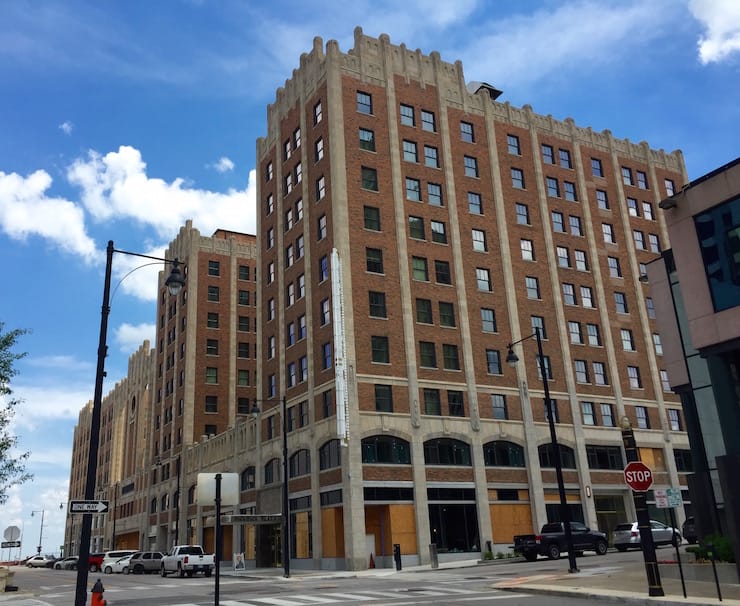
Published July 14th, 2017 at 12:30 PM
By Kevin Collison
A task force established by Gov. Greitens to examine state tax credit policy has returned with recommendations that preservationists say would substantially cut the historic tax credit program and make it much more difficult to utilize
The task force is recommending the historic tax credit program be lumped together with the brownfield tax credit program and both capped at $50 million annually. The current yearly cap on the historic tax credit program is $140 million, and the brownfield program generally runs $6- to $10 million annually, said Elizabeth Rosin.
The task force also is recommending a $2 million historic tax credit cap for each project.
Rosin is a Kansas City architectural historian and active preservationist. She described the potential damage to the historic tax credit program, should the Legislature choose to accept the panel’s recommendation, as “huge.”
“We’re doing a lot of work in the off season to education legislators about the programs and how it helps their communities,” Rosin said.
The program enacted in 1998 provides state tax credits for 25 percent of the eligible cost of renovating buildings certified as historic by federal and state officials. Those credits then can be sold or transferred by developers to raise cash to help finance projects.
When combined with a similar federal historic tax credit program that provides a 20 percent credit, the tools have been used to renovate dozens of historic buildings, making it a major force in the revitalization of downtown Kansas City in recent years.
Scores of older office buildings that had been vacant or underused in downtown have been redeveloped as residential projects and hotels in recent years. The conversions also have helped drive down the downtown office vacancy rate and prompted speculation that new office construction may occur as a result.
On July 21, the historic Pickwick complex, a former hotel, bus terminal and office building at 933 McGee will have its grand opening as the 260-unit East 9 at Pickwick Plaza, a $65 million project that relied on historic tax credits to complete its financing.
Other current downtown projects using the state historic tax credit program include the redevelopment of the historic Savoy Hotel; the conversion of the former Flashcube office building into apartments; the conversion of the former Brookfield office building into apartments and a hotel, and the renovation of the New England building into apartments.
Rosin said other recommendations by the governor’s task force would make the historic tax credit program much more unpredictable for developers to utilize. It would require the Legislature to appropriate funding annually, and establish a five-year sunset, after which, the entire program would have to be reauthorized.
“This creates a lot of uncertainty in the development world,” she said. “If I need to pull together financing over a year’s time and I’m not sure the program will be there, I’ll look at another state.”
Rosin said Missouri Historic Revitalization Alliance, a pro-tax credit lobbying group, estimates each dollar in tax credits stimulates $4- to $6 in construction costs.
An Oklahoma report on that state’s program, which is similar to Missouri, estimated that state gained 50 cents in tax revenues for every $1 in credit before the credits were even claimed.
But the Missouri historic tax credit program, along with other tax credit programs, has been a perennial target for lawmakers seeking more revenue. And with Missouri facing a potential $456 million budget shortfall next year, those programs are facing renewed scrutiny by the legislature and Gov. Greitens.
Here are some examples of prominent downtown Kansas City buildings that are either using or have used the state historic tax credit program in their redevelopment financing:
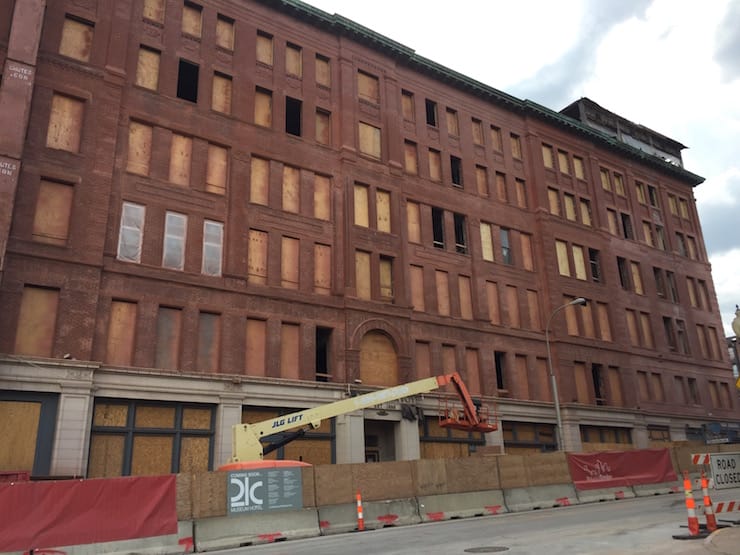
Historic Savoy Hotel and Grill.

The historic New England building is being renovated into 32 apartments.
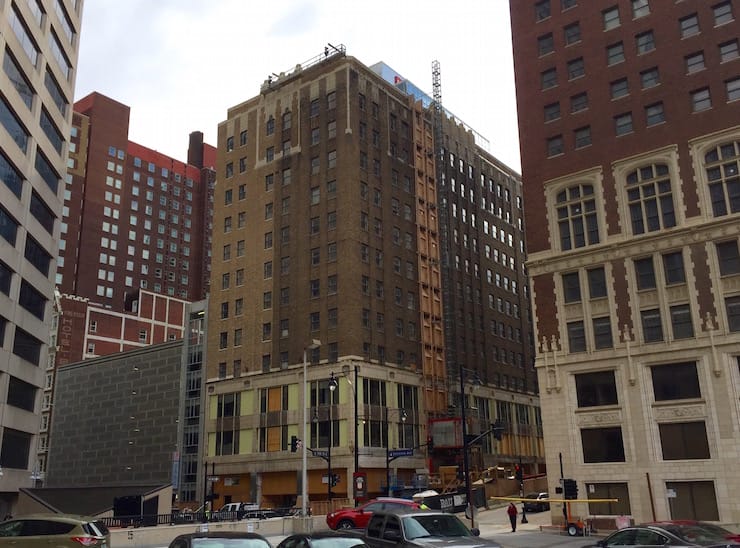
The Brookfield building is being converted to apartments and a hotel.
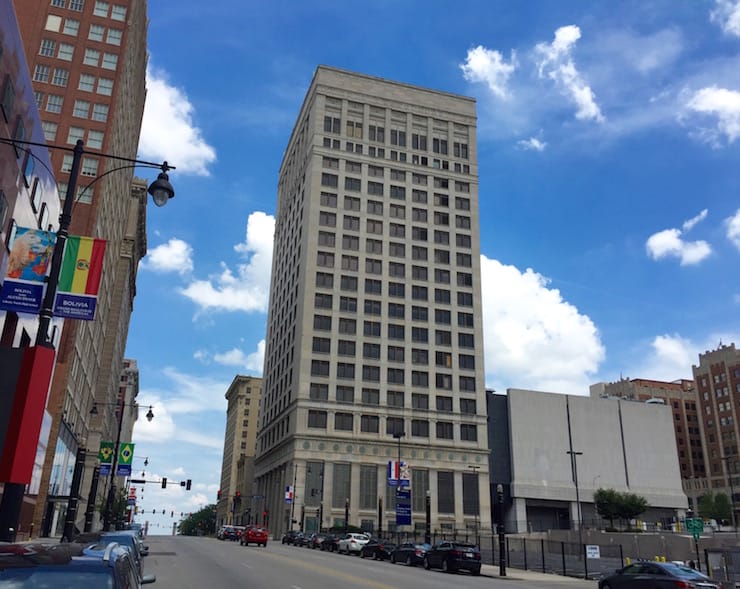
Interior demolition is underway at the 21-story former Federal Reserve Bank Building. It’s slated to become a 301-room Embassy Suites hotel.
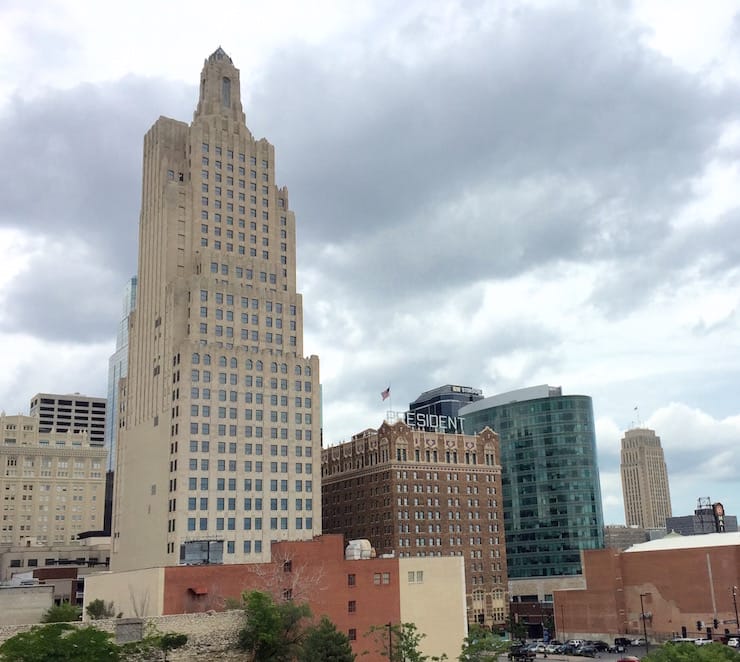
The Power & Light building was renovated into apartments, and the President Hotel across the street was revived, both using historic tax credits.


